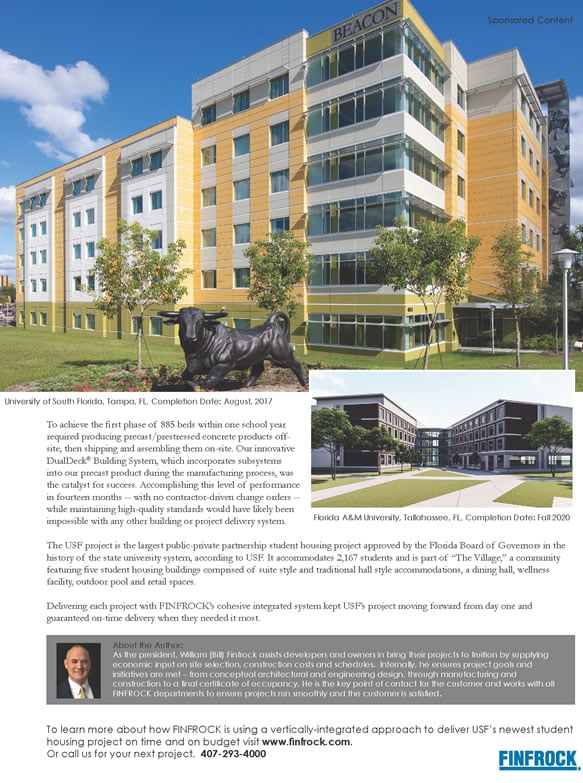May 2025 | Amy Keller
Located in east Orlando less than 50 miles from Kennedy Space Center’s launch complex, the University of Central Florida — also known by the moniker SpaceU — has long been recognized as a top supplier of graduates to the aerospace and defense industries and a hotspot for space research. Nearly 30% of KSC employees are UCF alumni — and over 60-plus years, UCF faculty and students have worked on about 700 NASA projects, with 40 active projects totaling more than $67 million in funding.
Among them is the NASA Lunar Vulkan Imaging and Spectroscopy Explorer (Lunar-VISE) investigation. Spearheaded by UCF planetary scientists Kerry Donaldson Hanna and Adrienne Dove, the $35-million mission scheduled for 2028 will send a robotic lander and rover to an unexplored region of the moon known as the Gruithuisen Domes. Scientists have long wondered what these volcanic features are made of and how they formed. The mission may also help us better understand how other planets, including the Earth, formed, and how to navigate the moon’s terrain.
UCF faculty and researchers are also focusing on everything from space propulsion to aerospace medicine to simulating moon and Martian dirt.
The actual term for that “dirt” is regolith — and regolith simulants, created by UCF’s Exolith Lab, are a hot commodity among companies that need them to test out how their landers, rovers and rockets will operate on the surface of the moon or Mars. Other researchers are using regolith simulants to learn how to farm in space and extract water, oxygen and other materials from the surface of the moon and Mars.
Meanwhile, UCF researchers are working on getting humans into space much faster. Kareem Ahmed, a UCF associate professor of mechanical and aerospace engineering, and his team at UCF’s new HyperSpace Center are working on developing propulsion systems that would enable spacecraft to travel as fast as Mach 17, which is 17 times the speed of sound or about 13,000 mph. Reaching such speeds could revolutionize space exploration by reducing travel time and costs.
The university also is pioneering a new degree program in aerospace medicine with an interdisciplinary program that will integrate students studying medicine, nursing, engineering and other fields, including computer science and optics and photonics. It will launch later this year with an elective in aerospace medicine for UCF medical students, with a master’s degree and residency program to follow. It’s the only such program in the nation.













